1. How do solar panels work?
2. What are LEDs
3. Advantages and disadvantages
of LEDs.
4. How bright are LED light
bulbs?
5. What is Lumens?
6. What is the difference
between Lumens and Lux?
7. Does the number of LEDs
in a bulb affect the brightness?
8. What is Color Temperature?
9. How do Lithium-Ion batteries
compare to other rechargeable batteries?
10. How bright are your solar
lights? How long will they light on a full charge?
1. How do solar panels work?
Solar Panels use light energy (photons) from the sun to generate electricity
through Photo-Voltaic effect (not to be confused with photo-electric effect).
The majority of modules use wafer-based crystalline silicon cells or a
thin-film cell based on cadmium telluride or silicon. Crystalline silicon,
which is commonly used in the wafer form in photovoltaic (PV) modules,
is derived from silicon, a commonly used semi-conductor.
In order to use the cells in practical applications, they must be:
- connected electrically to one another and to the rest of the
system
- Protected from mechanical damage during manufacture, transport
and installation and use (in particular against hail impact, wind
and snow loads). This is especially important for wafer-based
silicon cells which are brittle.
- Protected from moisture, which corrodes metal contacts and interconnects,
(and for thin-film cells the transparent conductive oxide layer)
thus decreasing performance and lifetime.
|
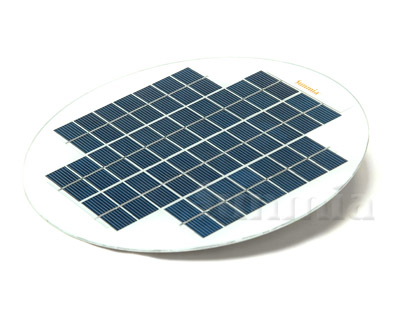 |
Module performances are generally rated under Standard Test Conditions
(STC): irradiance of 1,000 W/m? Solar spectrum of AM 1.5 and module temperature
at 25°C.
Electrical characteristics includes nominal power (PMAX, measured in W),
open circuit voltage (VOC), short circuit current (ISC, measured in Amperes),
maximum power voltage (VMPP), maximum power current (IMPP) and module
efficiency (%).
In kWp, kW is kilowatt and the p means "peak" as peak performance. The
"p" however does not show the peak performance, but rather the maximum
output according to STC.
Solar panels must withstand heat, cold, rain and hail for many years.
Many Crystalline silicon module manufacturers offer warranties that guarantee
electrical production for 10 years at 90% of rated power output and 25
years at 80%.
("Photovoltaic module", Wikipedia: The Free Encyclopedia)

2. What are LEDs (Light-emitting diodes)?
A light-emitting diode (LED) is an electronic light source. The LED was
first invented in Russia in the 1920s, and introduced in America as a
practical electronic component in 1962. Oleg Vladimirovich Losev was a
radio technician who noticed that diodes used in radio receivers emitted
light when current was passed through them. In 1927, he published details
in a Russian journal of the first ever LED.
LEDs present many advantages over traditional light sources including
lower energy consumption, longer lifetime, improved robustness, smaller
size and faster switching. However, they are relatively expensive and
require more precise current and heat management than traditional light
sources.
Applications of LEDs are diverse. They are used as low-energy indicators
but also for replacements for traditional light sources in general lighting
and automotive lighting. The compact size of LEDs has allowed new text
and video displays and sensors to be developed, while their high switching
rates are useful in communications technology.
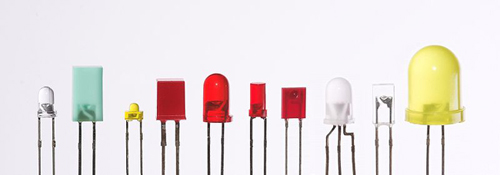
3. Advantages
- Efficiency: LEDs produce more light per watt than incandescent bulbs.
- Color: LEDs can emit light of an intended color without the use of
color filters that traditional lighting methods require. This is more
efficient and can lower initial costs.
- Size: LEDs can be very small (smaller than 2 mm) and are easily populated
onto printed circuit boards.
- On/Off time: LEDs light up very quickly. A typical red indicator LED
will achieve full brightness in microseconds. LEDs used in communications
devices can have even faster response times.
- Cycling: LEDs are ideal for use in applications that are subject to
frequent on-off cycling, unlike fluorescent lamps that burn out more
quickly when cycled frequently, or HID lamps that require a long time
before restarting.
- Dimming: LEDs can very easily be dimmed either by Pulse-width modulation
or lowering the forward current.
- Cool light: In contrast to most light sources, LEDs radiate very little
heat in the form of IR that can cause damage to sensitive objects or
fabrics. Wasted energy is dispersed as heat through the base of the
LED.
- Slow failure: LEDs mostly fail by dimming over time, rather than the
abrupt burn-out of incandescent bulbs.
- Lifetime: LEDs can have a relatively long useful life. One report
estimates 35,000 to 50,000 hours of useful life, though time to complete
failure may be longer. Fluorescent tubes typically are rated at about
10,000 to 15,000 hours, depending partly on the conditions of use, and
incandescent light bulbs at 1,000-2,000 hours.
- Shock resistance: LEDs, being solid state components, are difficult
to damage with external shock, unlike fluorescent and incandescent bulbs
which are fragile.
- Focus: The solid package of the LED can be designed to focus its light.
Incandescent and fluorescent sources often require an external reflector
to collect light and direct it in a usable manner.
- Toxicity: LEDs do not contain mercury, unlike fluorescent lamps.
Disadvantages
- High initial price: LEDs are currently more expensive, price per lumen,
on an initial capital cost basis, than most conventional lighting technologies.
The additional expense partially stems from the relatively low lumen
output and the drive circuitry and power supplies needed. However, when
considering the total cost of ownership (including energy and maintenance
costs), LEDs far surpass incandescent or halogen sources and begin to
threaten compact fluorescent lamps.
- Temperature dependence: LED performance largely depends on the ambient
temperature of the operating environment. Over-driving the LED in high
ambient temperatures may result in overheating of the LED package, eventually
leading to device failure. Adequate heat-sinking is required to maintain
long life. This is especially important when considering automotive,
medical, and military applications where the device must operate over
a large range of temperatures, and is required to have a low failure
rate.
- Voltage sensitivity: LEDs must be supplied with the voltage above
the threshold and a current below the rating. This can involve series
resistors or current-regulated power supplies.
- Light quality: Most cool-white LEDs have spectra that differ significantly
from a black body radiator like the sun or an incandescent light. The
spike at 460 nm and dip at 500 nm can cause the color of objects to
be perceived differently under cool-white LED illumination than sunlight
or incandescent sources, due to metamerism, red surfaces being rendered
particularly badly by typical phosphor based cool-white LEDs. However,
the color rendering properties of common fluorescent lamps are often
inferior to what is now available in state-of-art white LEDs.
- Area light source: LEDs do not approximate a "point source" of light,
but rather a lambertian distribution. So LEDs are difficult to use in
applications requiring a spherical light field. LEDs are not capable
of providing divergence below a few degrees. This is contrasted with
lasers, which can produce beams with divergences of 0.2 degrees or less.
- Blue Hazard: There is increasing concern that blue LEDs and cool-white
LEDs are now capable of exceeding safe limits of the so-called blue-light
hazard as defined in eye safety specifications such as ANSI/IESNA RP-27.1-05:
Recommended Practice for Photobiological Safety for Lamp and Lamp Systems.
- Blue pollution: Because cool-white LEDs (i.e., LEDs with high color
temperature) emit much more blue light than conventional outdoor light
sources such as high-pressure sodium lamps, the strong wavelength dependence
of Rayleigh scattering means that cool-white LEDs can cause more light
pollution than other light sources. It is therefore very important that
cool-white LEDs are fully shielded when used outdoors. Compared to low-pressure
sodium lamps, which emit at 589.3 nm, the 460 nm emission spike of cool-white
and blue LEDs is scattered about 2.7 times more by the Earth's atmosphere.
Cool-white LEDs should not be used for outdoor lighting near astronomical
observatories.
("Light-emitting diode", Wikipedia: The Free Encyclopedia)

4. How bright are LED light bulbs?
LED bulbs available in the market today differ in brightness. Generally,
for LEDs used in standard light fixtures, the brightness varies from 30
lumens to 1200 lumens. The brightest LED for regular light fixtures is
usually the floodlight or spotlight. The brightest LED spotlights use
approximately 25W, compared to a 120W incandescent. When comparing LED
bulbs with the same shape and size of an incandescent bulb, the LED produces
about 600 lumens. Due to their nature, LEDs are usually directionally
and thus are more effective if pointed to the desired direction for better
quality illumination.
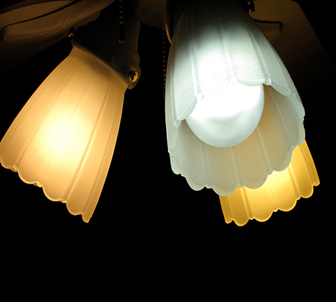
5. What is Lumens?
The lumen (symbol: lm) is the SI unit of luminous flux, a measure of the
perceived power of light. Luminous flux differs from radiant flux, the
measure of the total power of light emitted, in that luminous flux is
adjusted to reflect the varying sensitivity of the human eye to different
wavelengths of light. The lumen is defined in relation to the candela
by 1 lm = cd·sr = 1 lx·m2 That is, a light source that uniformly
radiates one candela in all directions radiates a total of 4? lumens.
If the source were partially covered by an ideal absorbing hemisphere,
that system would radiate half as much luminous flux-only 2? lumens. The
luminous intensity would still be one candela in those directions that
are not obscured.
Explanation
If a light source emits one candela of luminous intensity uniformly across
a solid angle of one steradian, its total luminous flux emitted into that
angle is one lumen. Alternatively, an isotropic one-candela light source
emits a total luminous flux of exactly 4? lumens. The lumen can be thought
of casually as a measure of the total "amount" of visible light
in some defined beam or angle, or emitted from some source. The number
of candelas or lumens from a source also depends on its spectrum, via
the nominal response of the human eye as represented in the luminosity
function. A 23 watt compact fluorescent lamp emits roughly 1500 to 1700
lm, which is comparable to a general-service 100 W incandescent light
bulb designed for use at 120 V. Incandescent light bulbs designed for
operation at higher voltages are generally less efficient. For example,
standard 230 V bulbs listed in one online catalog include models that
emit from 1200 to 1400 lm. The number of lumens produced per watt of power
consumed is the wall-plug luminous efficacy of the source.
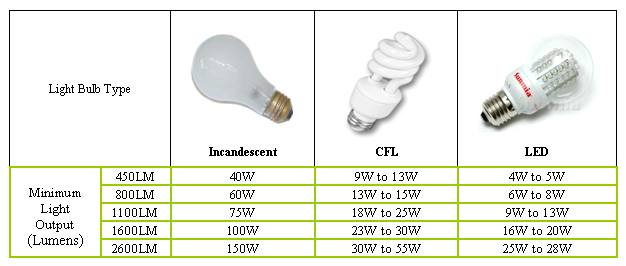
6. Differences between lumens and lux
The difference between the units lumen and lux is that the lux takes into
account the area over which the luminous flux is spread. A flux of 1000
lumens, concentrated into an area of one square meter, lights up that
square meter with an illuminance of 1000 lux. The same 1000 lumens, spread
out over ten square meters, produces a dimmer illuminance of only 100
lux. Achieving an illuminance of 500 lux might be possible in a home kitchen
with a single fluorescent light fixture with an output of 12000 lumens.
To light a factory floor with dozens of times the area of the kitchen
would require dozens of such fixtures. Thus, lighting a larger area to
the same level of lux requires a greater number of lumens. ("Lumen (unit),"
Wikipedia: The Free Encyclopedia)

7. Does the number of LEDs in a bulb affect the brightness?
No. The number of LEDs in a bulb does not determine the brightness of
the bulb. This is due to the fact that there are several types of LEDs
that vary in sizes and light output. The best way to measure brightness
is by lumens and lux (Refer to Q#5 and #6)
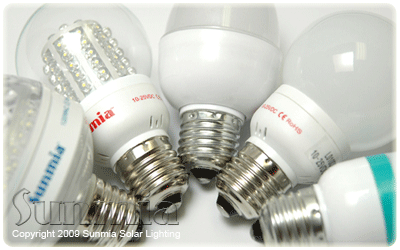
8. What is Color Temperature?
Color temperature is a characteristic of visible light that has important
applications in lighting, photography, videography, publishing, and other
fields. The color temperature of a light source is determined by comparing
its chromaticity with that of an ideal black-body radiator. The temperature
(usually measured in Kelvin (K)) at which the heated black-body radiator
matches the color of the light source is that source's color temperature;
for a black body source, it is directly related to Planck's law and Wien's
displacement law. Counter intuitively, higher color temperatures (5000
K or more) are "cool" (green-blue) colors and lower color temperatures
(2700-3000 K) "warm" (yellow red) colors.
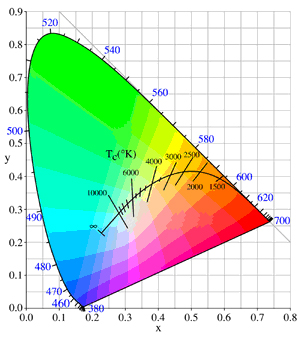

9. How do Lithium-Ion batteries compare to other rechargeable batteries?
Lithium-ion batteries have a higher energy density than most other types
of rechargeable batteries.? This means that for their size or weight they
can store more energy than other rechargeable batteries. They also operate
at higher voltages than other rechargeable batteries, typically about
3.7 volts for lithium-ion vs. 1.2 volts?for NiMH or NiCd. This means a
single cell can often be used rather than multiple NiMH or NiCd cells.
Lithium-ion batteries also have a lower self discharge rate than other
types of rechargeable batteries.
This means that once they are charged they will retain their charge for
a longer time than other types of rechargeable batteries.? NiMH and NiCd
batteries can lose anywhere from 1-5% of their charge per day, (depending
on the storage temperature) even if they are not installed in a device.
Lithium-ion batteries will retain most of their charge even after months
of storage. (GreenBatteries.com 2009)
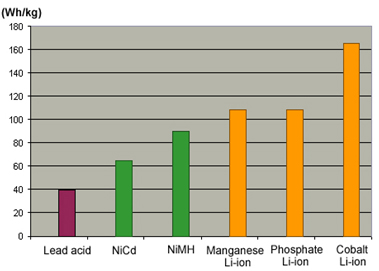
10. How bright are your solar lights? How long will they light on a full
charge?
The solar lights come equipped with a standard screw base for any DC light
bulb the user prefers. Sunmia however recommends LED light bulbs. The
brightness of the solar light depends on the type of bulb being used,
for example a 1W LED bulb or a 3W LED bulb (used in our Yosemite series).
The Sunmia LED lights are Warm White in color and closely comparable to
a CFL light color. Generally, brightness of the 1W LED bulb is likely
comparable to a 10W regular incandescent bulb. Specifically it has a Lumen
of 42 with a color temperature range of 29000-35000 Kelvin.
Technically, the 1W LED light can stay on for approximately 36 hours on
a full charge given the fixture is using a 3Ah battery. However, it really
does differ according to your local weather patterns. If the battery is
able to complete its charge cycle, then the bulb will be able to light
for the calculated period of time. However, if the battery does not complete
its charge cycle it will not be able to provide full charge thus reducing
the time length that the bulb lights. Our solar lights come equipped with
a switch that allows users to choose how long they wish to have the light
on, either from dusk to dawn or just 10 hours.
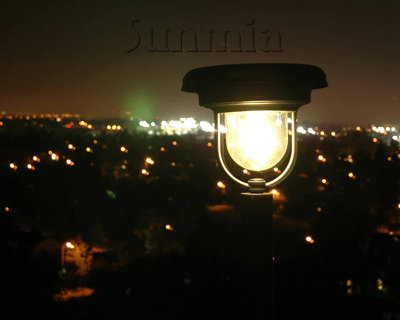
|









